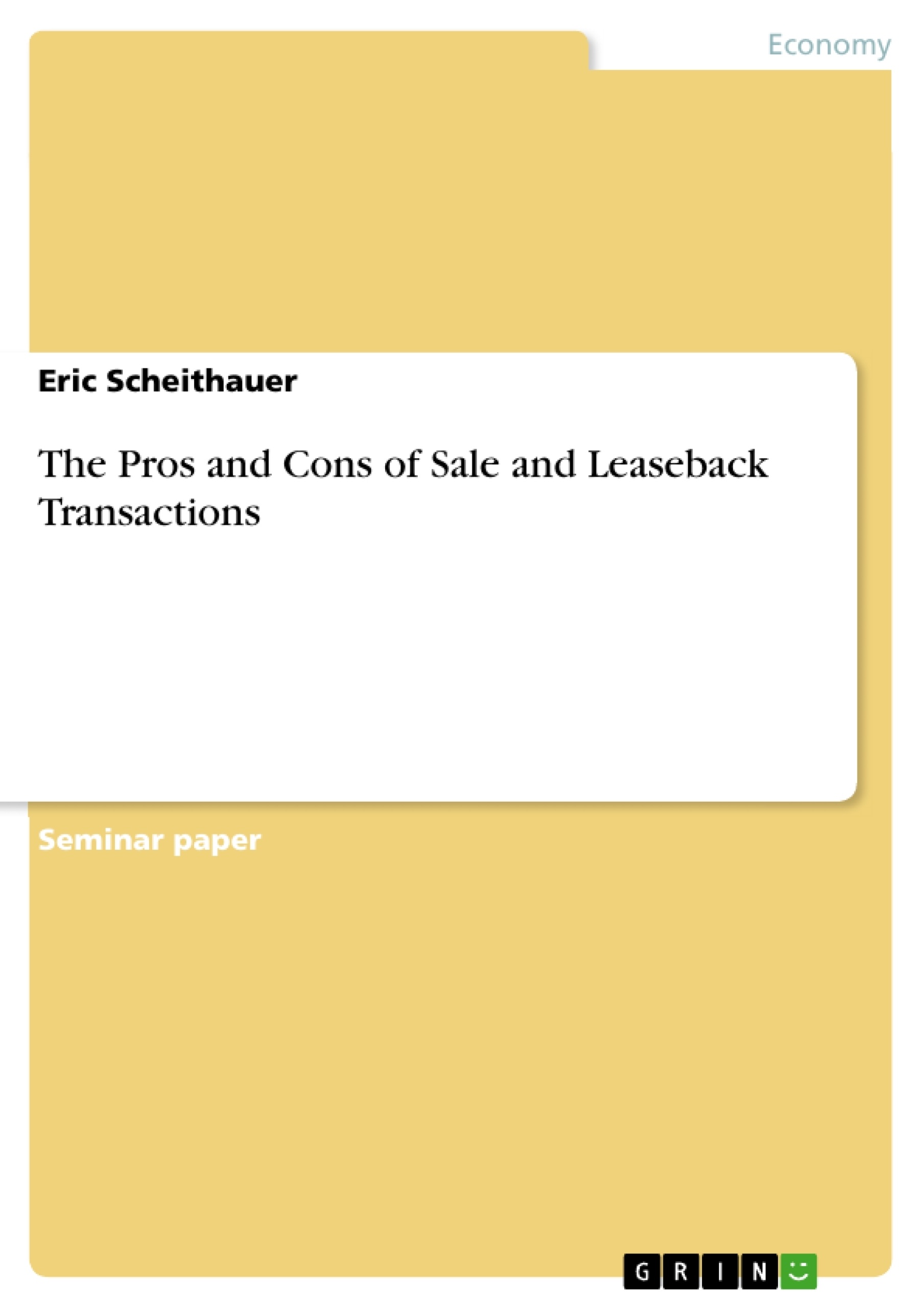The objective of this work is to analyze and assess the pros and cons of sale and leaseback transactions (SLBTs) from different perspectives. For that purpose, mainly printed sources from leading authors in the area of finance and accounting as well as academic journals will be used. To include latest developments and insights, the author will reference publications by standardization bodies, the Big Four audit firms as well as consulting companies, among others.
At first, the foundational framework will be established, including an overview of available financing methods and a definition on what is commonly understood by external as well as internal financing. The following sub-chapter drills deeper into the matter by defining what leases are and how they can be classified into different types. For that reason, operating and financial leases will be distinguished with reference to common accounting standards. Additionally, a practical example will illustrate this distinction. This is closely followed by the definition of sale and leaseback transactions including the prime characteristics of it. Also, a practical example will ensure clearer understanding.
In the main part the pros of sale and leaseback will be assessed from the perspective of the seller as well as from buyer of the assets. The associated cons will be analyzed thereafter. Another practical example will serve to complement this section.
In the next chapter the possible effects of changing regulations, laws and accounting practices regarding leases and SLBT’s will be outlined. This includes a practical example to illustrate and explain the effects of the new accounting standard “IFRS 16 Leases” on this subject from different perspectives. After that, a concise overview of typical sale and leaseback applications will follow.
Table of Contents
- 1 Introduction
- 2 Financing methods
- 2.1 External financing
- 2.2 Internal financing
- 2.3 Leases
- 2.3.1 Operating lease
- 2.3.2 Financial (capital) lease
- 2.3.3 Practical example operating vs. financial lease
- 2.3.4 Sale and leaseback
- 2.3.5 Practical example of sale and leaseback
- 3 Pros and Cons of sale and leaseback transactions
- 3.1 Pros for the seller (lessee/occupier)
- 3.2 Pros for the buyer (lessor/investor)
- 3.3 Cons
- 3.4 Practical example direct M&A vs. sale and leaseback transaction
- 4 Effects of changing laws, regulations, and accounting practices on sale and
leaseback transactions
- 4.1 New IASB & FASB lease accounting standards
- 4.2 Effects of "IFRS 16 Leases" on sale and leaseback transactions
- 4.3 Typical sale and leaseback applications in practice
- 5 Conclusion & Outlook
Objectives and Key Themes
The objective of this paper is to explore the concept of sale and leaseback transactions and to analyze their advantages and disadvantages for both the seller and the buyer. This analysis also considers the impact of recent changes in accounting standards on sale and leaseback transactions.
- Financing methods, including internal and external financing, and various types of leases
- Pros and cons of sale and leaseback transactions for both the seller and the buyer
- Impact of new accounting standards, such as IFRS 16, on sale and leaseback transactions
- Practical examples and applications of sale and leaseback transactions in real-world scenarios
- Potential challenges and future developments related to sale and leaseback transactions
Chapter Summaries
The first chapter provides a general introduction to the topic of sale and leaseback transactions. It outlines the structure of the paper and introduces the main themes that will be explored. Chapter 2 delves into various financing methods, including external financing, internal financing, and different types of leases, such as operating leases, financial leases, and sale and leaseback transactions. Practical examples illustrate the differences between operating and financial leases, as well as the application of sale and leaseback transactions. Chapter 3 examines the advantages and disadvantages of sale and leaseback transactions for both the seller (lessee/occupier) and the buyer (lessor/investor). The chapter also includes a practical example comparing a direct merger and acquisition transaction with a sale and leaseback transaction.
Keywords
This paper focuses on the analysis of sale and leaseback transactions, exploring their financial implications and practical applications. Key themes include financing methods, lease accounting, and the impact of changing accounting standards. Other important keywords include operating leases, financial leases, IFRS 16, and M&A transactions.
- Arbeit zitieren
- Eric Scheithauer (Autor:in), 2016, The Pros and Cons of Sale and Leaseback Transactions, München, GRIN Verlag, https://www.grin.com/document/378895



